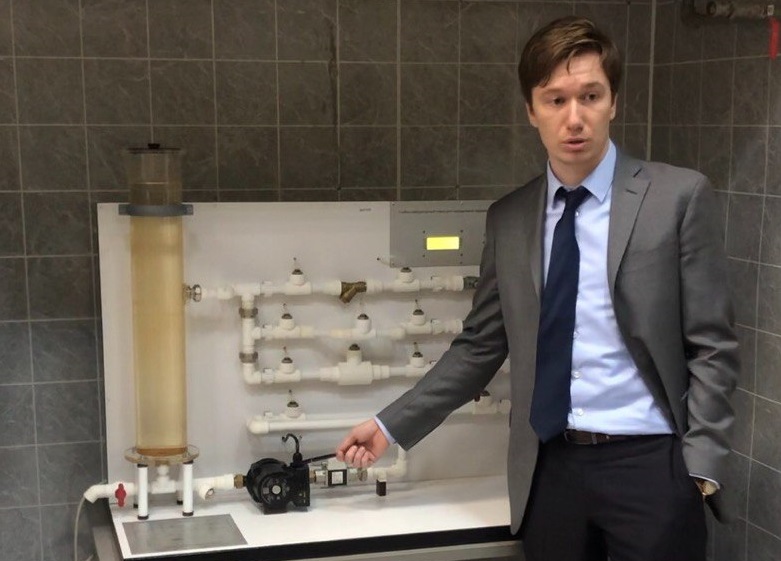
The 10th All-Russian Youth Scientific Forum «Science of the Future – Science of the Young» recently concluded in Saratov, where the winners and finalists of the student and postgraduate research paper competition were announced. This milestone event brought together over 600 young researchers and leading experts from around the world.
Forum`s Mission and Impact
Sergey Salikhov, Chairman of the forum`s program committee and First Vice-Rector of NUST MISiS, highlighted that the forum, established in 2014 by the initiative of the Russian Ministry of Science and Higher Education and leading «mega-grant» scientists, successfully fulfills its mission of transferring scientific expertise to the younger generation.
«It really works! Over the years, the forum has become a landmark event, and we witness a multitude of outstanding projects across various scientific fields. Many of these are built upon developments from laboratories supported by mega-grants,» he emphasized.
According to Salikhov, the presented works are increasingly oriented towards practical applications, offering young scientists an opportunity to draw the attention of the real economy sector to their innovative, often very fresh ideas.
Breakthroughs in Earth Sciences and Ecology
In the «Earth Sciences, Ecology, and Rational Environmental Management» section, the first place was awarded to postgraduate student Tumase Aina from the A.V. Zhirmunsky National Scientific Center of Marine Biology of the Far Eastern Branch of the Russian Academy of Sciences. Her research focuses on «Infection of Commercial Mollusk Species with Parasitic Microalgae.»
Aina explained: «The Far East is known for its developed aquaculture farms. Five years ago, my team discovered green commercial mollusks, highly valued in Chinese cuisine. We pondered the question: why do they turn green?»
Further investigations revealed that the mollusks are infected with parasitic microalgae. These algae are dangerous not primarily due to toxin production, but rather by penetrating the mollusk`s tissues, causing their destruction. Additionally, the green coloration makes them unappealing for sale.
Currently, Aina`s group is developing treatment methods for these mollusks, which will help ensure the safety of individuals engaged in self-harvesting and preserve the marine ecosystem.
Innovations in Chemistry and Chemical Technologies
The second place in the «Chemistry and Chemical Technologies» section was awarded to postgraduate student Tatyana Rokhmanka from the A.V. Topchiev Institute of Petrochemical Synthesis of the Russian Academy of Sciences. She presented a development of highly efficient membranes made from polyalkylmethylsiloxanes for hydrocarbon gas separation.
«Our new polymer membrane based on silicone rubber allows for the effective extraction of valuable hydrocarbons from natural and associated petroleum gases,» Rokhmanka elaborated. «We optimized the synthesis process and the polymer`s cross-linked structure to achieve the best transport and separation characteristics. This not only stabilizes membrane properties but also significantly reduces energy consumption for hydrocarbon separation. Compared to foreign analogues, our technology cuts energy consumption for gas conditioning by almost five times.»
Tatyana also noted that burning approximately a quarter of extracted associated petroleum gas poses a serious environmental problem. «We propose an alternative to burning: returning these components to the production cycle for the manufacture of paints, polymers, solvents, and other products,» she added.
Advancements in Information Technologies and Mathematics
The winner in the «Information Technologies and Mathematics» section was Kirill Glinsky, a postgraduate student from the Moscow Institute of Physics and Technology. His project focuses on applying machine learning methods to create ultra-reliable communication with low latency in future cellular networks.
«Many associate cellular communication with typical calls or watching videos. However, its potential is much broader – for instance, controlling autonomous vehicles or supporting telemedicine,» Glinsky emphasized. In this context, reliable communication with low latency is critically important for the development of fifth-generation (5G) mobile communication.
He continued: «I developed a set of machine learning-based algorithms that ensure high communication reliability and provide low latencies even under very fast user movement, for example, when a person is driving a car. These artificial intelligence methods allow for increasing network capacity by up to two times compared to existing solutions.»











